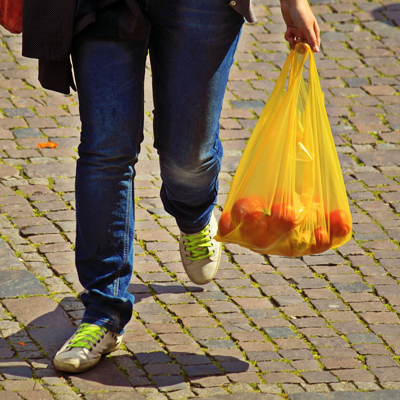What’s wrong with plastic bags?
WHAT’S WRONG WITH PLASTIC BAGS?
Marc Gumbrill, Born Free’s Head of Business Sustainability, explains how, and why, we can reuse plastic bags
 Plastic bags have some unique problems. While their environmental impact for wildlife, communities and the planet are large, the cost of making and sourcing plastic bags is pretty low. Made from ethylene, a by-product of petrol or natural gas, plastic bags are a cheap and functional product for retailers, but as a result, shoppers end up with piles of plastic bags spilling out of cupboards and wondering what to do with them all.
Plastic bags have some unique problems. While their environmental impact for wildlife, communities and the planet are large, the cost of making and sourcing plastic bags is pretty low. Made from ethylene, a by-product of petrol or natural gas, plastic bags are a cheap and functional product for retailers, but as a result, shoppers end up with piles of plastic bags spilling out of cupboards and wondering what to do with them all.
With a bit of thought, we can find practical uses for them. Of course, some of us already reuse plastic bags, when we go shopping, line our waste bins or pick up dog poo, but many bags will still end up in landfill having only been used once – from shop to bin.
Even when disposed of properly, plastic bags are so lightweight and flimsy, they are easily picked up and carried by the wind. They escape from bins and landfills, and end up littering the countryside, blowing down the street, flapping from trees, clogging drains, and making their way out to sea. Unfortunately they may stay in the environment for hundreds of years, thereby causing harm for a very long time.
But it’s not just plastic bags, all types of plastic pollution is having a huge negative impact on wild animals and the environment around the world. Plastic is everywhere and used in numerous ways in our daily lives – it is even in the food we eat! The message is clear to all, we must try to reduce our use of plastic and keep recycling as much as possible to reduce waste.
So what can we, as individuals, do with all these plastic bags to alleviate the problem? Here are some useful suggestions you may not have thought of.
- Fill in gaps! Stuff plastic bags into cavities around pipes, ducts, or other wall or floor holes to provide a backing before filling with spray foam or caulk.
- Protect fruit! In autumn, tie plastic bags over nearly ripe fruit on a tree to keep out bugs and guard against frost damage.
- Apply waxes and creams to furniture. Use a bag as a glove to apply furniture wax or polish, then buff to a shiny finish using a soft, dry cloth.
- Transport plants. Divide overgrown plants and place the extra ones in bags to contain the soil and keep in moisture while you carry them to a friend or pass to family.
- Seal a paint can. When you’ve finished painting, slip a plastic bag over the paint can lid before replacing it so that dirt or flakes of dried paint on the lid’s underside won’t fall into the liquid.
- Keep your trousers clean. Cut holes in the bottom of two bags and wear the bags like kneepads to protect your trousers when you’re gardening or kneeling on grass.
- Make sure glue won’t stick to the wrong thing. Before clamping up a woodwork project that’s just been glued, slip a plastic bag between the piece you’ve worked on and the clamp blocks. Once the glue has dried, the blocks will slip off easily.
- Protect things from snow or frost. Tie plastic bags around your car’s side-view mirrors so that you don’t have to scrape ice off them, just pull the bags off and you’re on your way.
- Keep your cat or dog comfy. Stuff an old pillowcase tightly with plastic bags, sew the open end closed, and let your pet lounge on it during nap time.
- Keep jigsaw puzzles and other games tidy. Gather up all the jigsaw pieces or parts of a game and keep them safe and separate.
